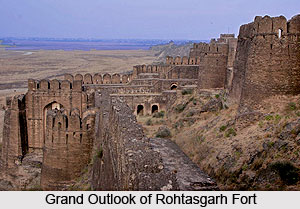 Forts in Bihar are attractive instances of eastern Indian architecture, reflected through its numerous forts and palaces including Munger Fort, Rohtasgarh Fort, Maner Fort and Raj Mahal. Such historical forts are the remnants of the regimes of the many emperors who ruled this part of the country several decades ago. Tourists will come across a unique combination of Hindu and Mughal architectural styles in the various regional forts of this state. Travellers from different portions of India as well as overseas pay visit to Bihar to catch sight of these forts.
Forts in Bihar are attractive instances of eastern Indian architecture, reflected through its numerous forts and palaces including Munger Fort, Rohtasgarh Fort, Maner Fort and Raj Mahal. Such historical forts are the remnants of the regimes of the many emperors who ruled this part of the country several decades ago. Tourists will come across a unique combination of Hindu and Mughal architectural styles in the various regional forts of this state. Travellers from different portions of India as well as overseas pay visit to Bihar to catch sight of these forts.
Jalalgarh Fort
Dating back to more than 300 years ago, the Jalalgarh Fort is situated at a distance of nearly 20 kms away from the northern part of Purnia region of Bihar. Syed Muhammed Jalaluddin Khan had constructed the fort. However some historians claim that the fort was established by Saif Khan who was the Nawab of Purnia in the year 1722. High walls surround the fort which used to act as excellent defence against the Nepalese conquests and the shape of the fort is quadrangular. A fusion of Islamic and Hindu architecture is observed in the fort.
Munger Fort
Munger Fort was erected by the rulers of the Slave Dynasty at the area of Munger in Bihar, which is a rocky hill, on the southern banks of Ganga River. Its date of origin lies in mystery. Certain historical and religious structures are existent in the fort premises consisting of the Tomb of Mulla Muhammad Said, Palace of Shah Suja, Tomb of Pir Shah Nufa, the temple of Chandisthana, a British graveyard of 18th century and also the Kashtaharini Ghat.
Rohtasgarh Fort
Located at Rohtas town in Bihar, the Rohtasgarh Fort is amongst the oldest forts of this state and it represents the culture of Sone Valley. At present, most of the fort has been reduced to ruins, which bear testimony to its eventful past. King Harishchandra belonging to Solar Dynasty had constructed the Rohtasgarh Fort, naming it after Rohitasva, who was his son. The Aina Mahal, Hathiya Pol, The Hanging House, Ganesh Temple and Jama Masjid are some of the main parts of the fort.



















